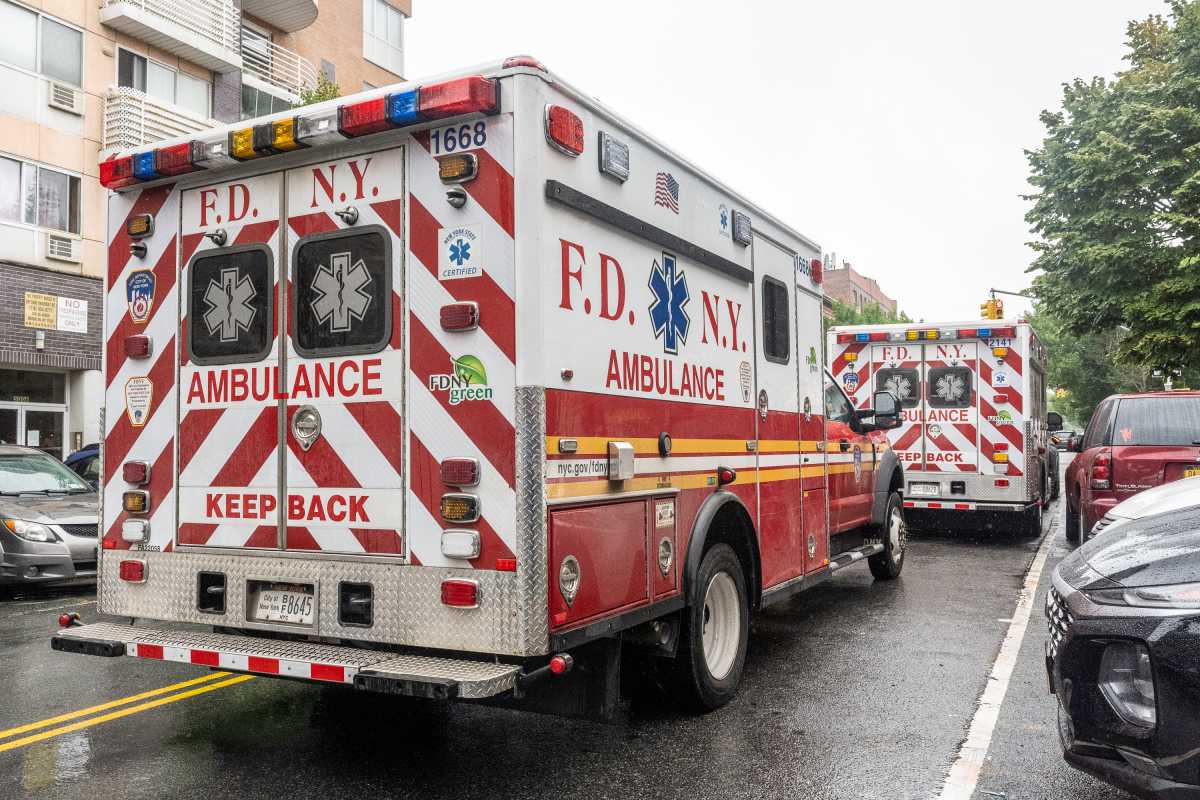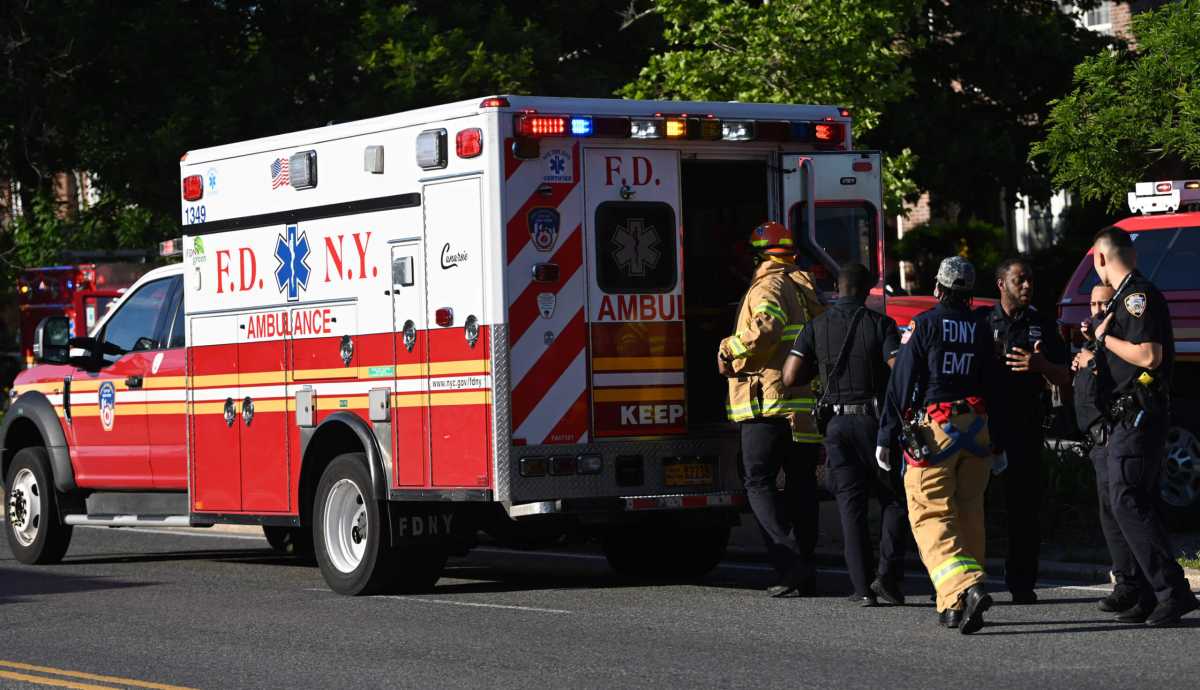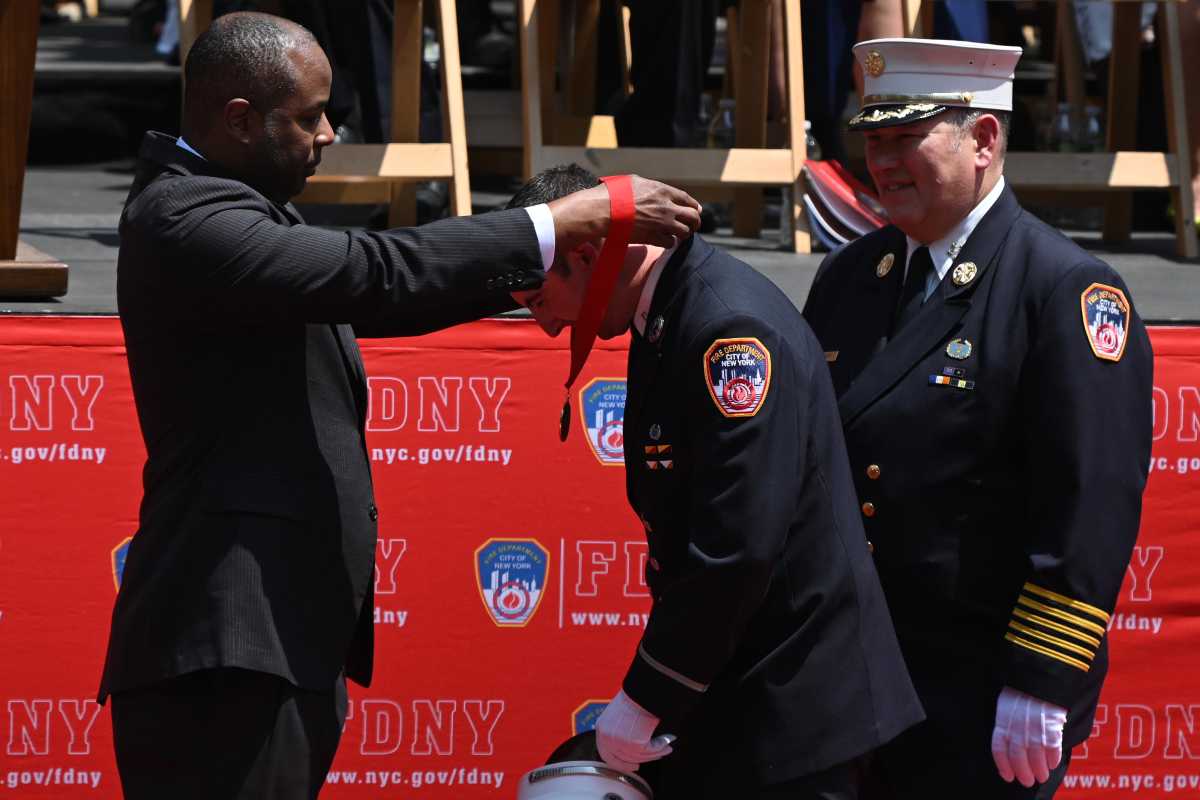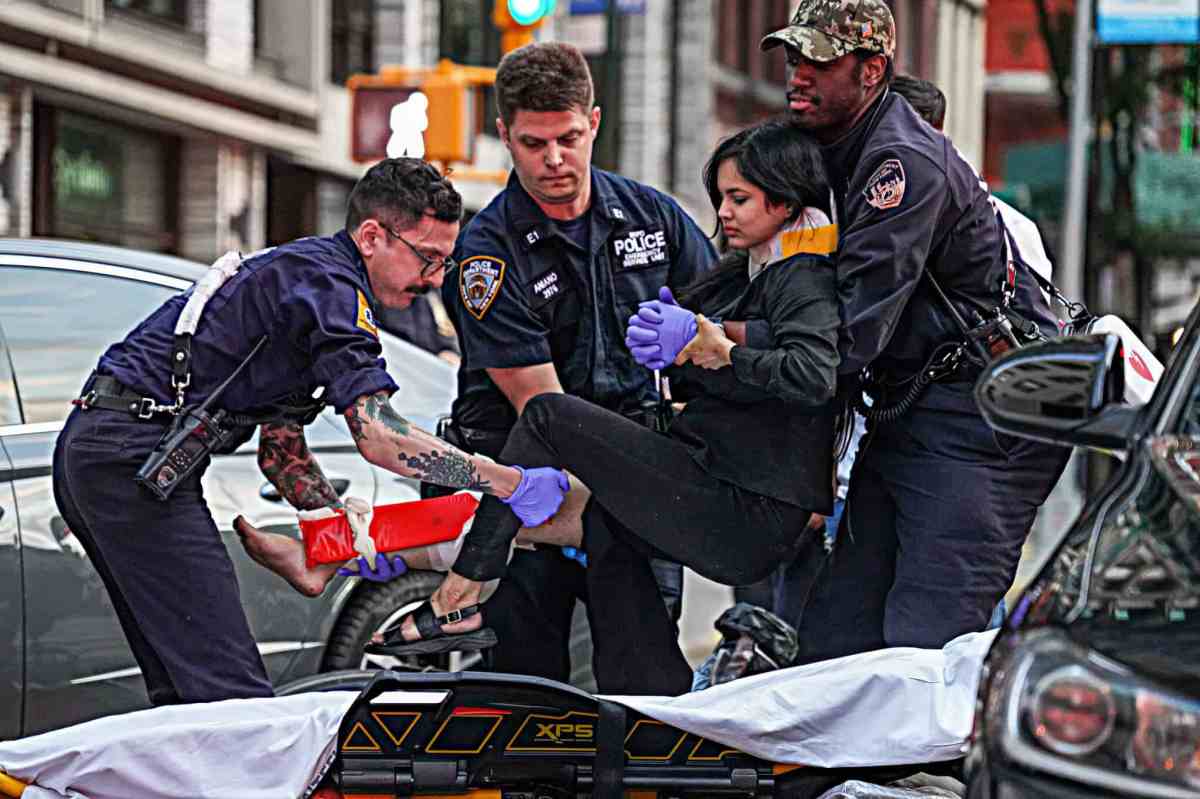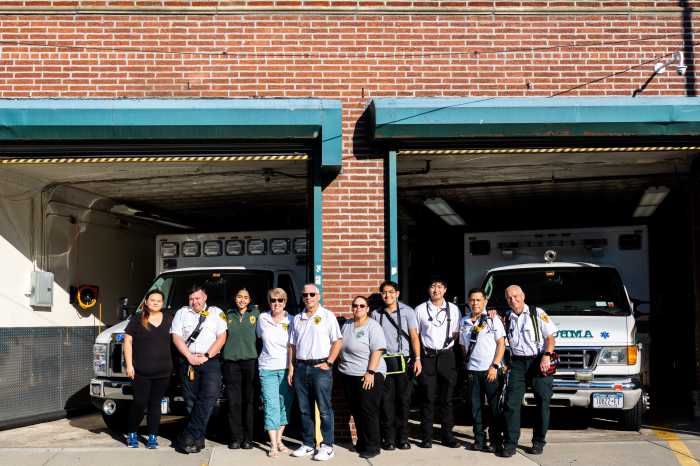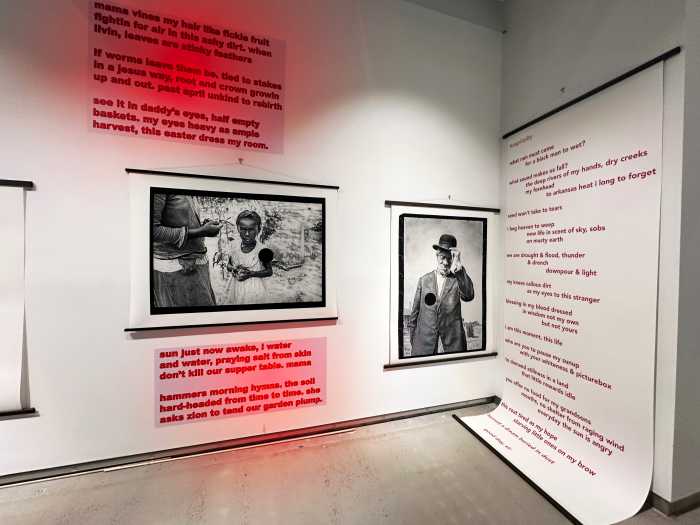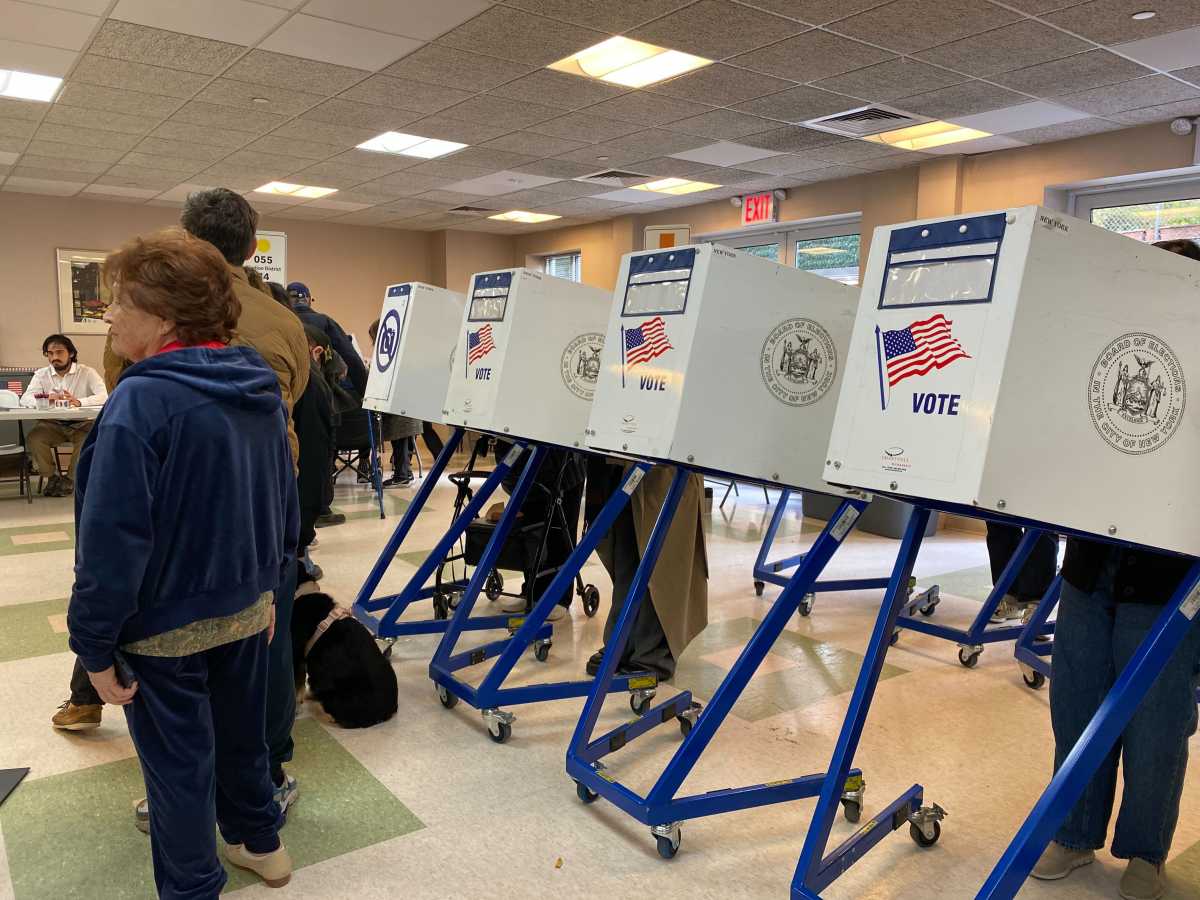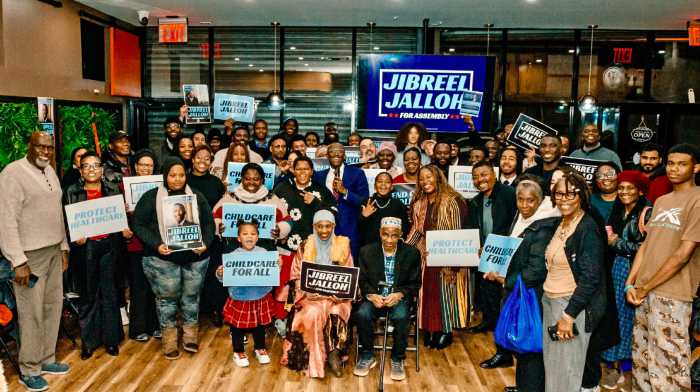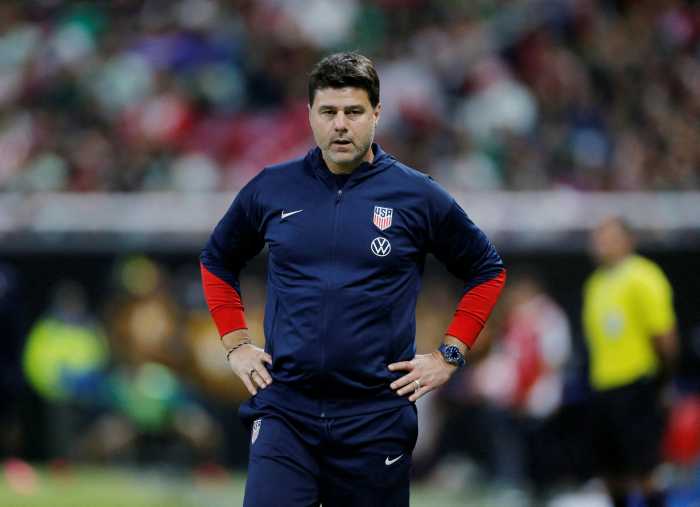FDNY ambulances are taking longer to reach life-threatening medical emergencies for the fourth consecutive year, according to the city’s latest Mayor’s Management Report, with union leaders blaming chronic understaffing and a lack of investment by City Hall.
The data show ambulances took an average of 11 minutes and 21 seconds to respond to life-threatening emergencies in fiscal year 2025 — up 29 seconds from 2024 and nearly two minutes longer than in 2021, when the average was 9 minutes and 34 seconds.
Oren Barzilay, a 30-year FDNY EMS veteran and president of Local 2507, which represents 4,500 emergency medical technicians, paramedics and fire inspectors, told Brooklyn Paper that although call volume has consistently increased since the COVID-19 pandemic, EMS workers are still operating with the same level of resources.
He said City Hall has failed to invest in meeting the higher demand.
In fiscal 2025, the city’s “street doctors” handled 1,615,531 emergency medical incidents — 227,488 more than in 2021, averaging about 4,400 calls a day. Life-threatening emergencies dropped slightly, by 2%, from 633,361 to 620,467, but the volume remains well above 2021’s total of 515,558.
“The records show that [the numbers] go up by 1,000s of calls every year. Yet we are still working with the same amount of resources when they anticipate 1.2 million calls, and something has to give,” Barzilay said. “When you don’t add the manpower and ambulances to the streets due to the demand, [increased response time] is the result.”
He said the response times in the Mayor’s Management Report don’t tell the full story.
“They’re posting what the average [response time] is, which is 11, but they’re not telling you that sometimes people wait 20 to 30 minutes for the high-priority calls and sometimes hours for the low-priority calls,” Barzilay said.
According to Barzilay, the EMS attrition rate is 70%. The department loses about two members a day, with many EMTs and paramedics staying only three to five years before moving on to higher-paying city jobs.
Barzilay largely attributes the turnover to low pay.
“We are the lowest-paid employees of New York City. Meanwhile, firefighters, police officers and sanitation workers make twice as much as what we make. I have men and women that live in shelters, live in their cars,” Barzilay said. “It’s poverty wages, and they don’t want to fix it, so they lose manpower on a daily basis.”
Local 2507 has long raised concerns about pay disparities between EMS workers, FDNY firefighters and NYPD officers. A rookie EMT’s salary starts at $39,386, or about $18 an hour, compared with $45,196 for a rookie firefighter. After five years, FDNY EMS workers often reach a top salary of about $59,000, while firefighters can make around $110,000.
While the union has the support of the City Council, it has been locked in a three-year fight with City Hall for a new labor contract, despite Mayor Eric Adams’ 2021 campaign pledge to address the pay gap.
Barzilay also noted that EMTs and paramedics — who the city has not recognized as a uniformed emergency service — face the same dangers as police officers and firefighters. In 2022, veteran FDNY EMS Lt. Allison Russo was stabbed to death while on duty in Queens, and in 2017 EMT Yadira Arroyo was run over and killed in the Bronx by a patient who stole her ambulance.
“They’re exposed to deadly communicable diseases on a daily basis, and sometimes they are infected by those diseases, which nobody wants to acknowledge,” Barzilay said. “We go on the same calls that the police officers go to, shootouts or stabbings. You have all these people responding to the same 911 call, making twice as much as you. Once [EMTs] realize that there’s no future here, they leave. And that’s the biggest obstacle.”
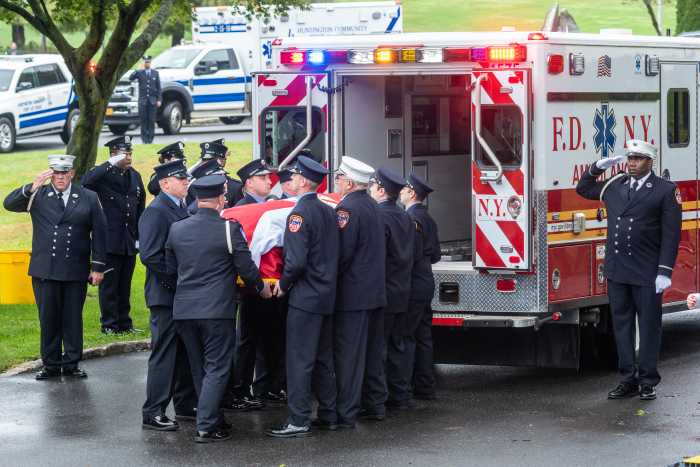
Jasiah Canelo, an FDNY EMT since 2003 and assigned to EMS Station 13 in Washington Heights, told Brooklyn Paper he has always loved helping people. He became an EMT after a friend died in a motorcycle accident and said response times have worsened because of chronic understaffing.
The work, he said, opened his eyes to what is “really going on in the world.”
“It’s definitely a positive when we get to do our jobs and help people,” Canelo said. “But it’s opened my eyes to how much really goes on in the world because you’re seeing someone dead in front of you, or really hurt, or going through a lot of pain? Sometimes you’re the last person that the person who just died comes in contact with, so that’s definitely opened my eyes a lot.”
Canelo, who works the 12-hour night shift, said retention problems stem not only from low pay but also from the crushing workload. Sometimes only two basic life support EMT units cover a station even when demand calls for more, especially at high-volume locations.
“Sometimes we don’t have the bodies to put people on a truck. I’m doing 6, 7, 8, 9, 10 jobs at night, and I’m coming home with a check that sometimes it’s not even enough to pay all my bills,” Canelo said. “We’re overworked and understaffed.”
In addition to the dangers EMTs face — including one call where a patient who reportedly overdosed chased them with a hypodermic needle — the job is physically punishing. Workers often carry patients down multiple flights of stairs when elevators aren’t available.
“Aside from [the job] being mentally taxing, it is also physically taxing,” Canelo said. “We’re seeing all this traumatic stuff. We’re dealing with extremely high call volumes, and we’re dealing with [extremely challenging] people. Some of these people want to stab [and] kill us. And we still show up to our shift every day.”
Like many of his colleagues, Canelo said he is an EMT “with all his heart” and wants to keep working because the job is fulfilling.
“But financially, it doesn’t make sense. If I stay, I’ll be working till I’m 60, [and] I wouldn’t be able to pay the bills. Right now, it’s even difficult for me to pay the bills,” Canelo said. “So I don’t see myself being here long term, but I would love to be here long term.”
In a statement to Brooklyn Paper, the FDNY and City Hall said more EMS staff were on duty each month in the past fiscal year than in the previous 25 years. The department said it is hiring EMTs as quickly as its training capacity allows, noting that a class of 245 EMTs and trainees recently began training.
Other initiatives to reduce response times include the Hospital Liaison Officer pilot (HLO) program, where EMS crews transfer patients with non-life-threatening conditions to HLO teams to speed ambulance turnaround; telehealth technology that directs 911 calls for non-urgent conditions to NYC Health + Hospitals providers; deployment of 13 paramedic response units in high-volume areas; and a public service campaign to educate New Yorkers on when to call 911.
“While the increase in emergency response times is the result of several factors beyond our control, including a drastic increase in outer-borough traffic congestion and higher call volumes, we continue to address this issue by improving coordination with hospitals, enhancing efficiency in high-volume areas, and leveraging telehealth technology to streamline care. We take this issue extremely seriously and will continue to take steps to keep New Yorkers safe,” the statement said.


